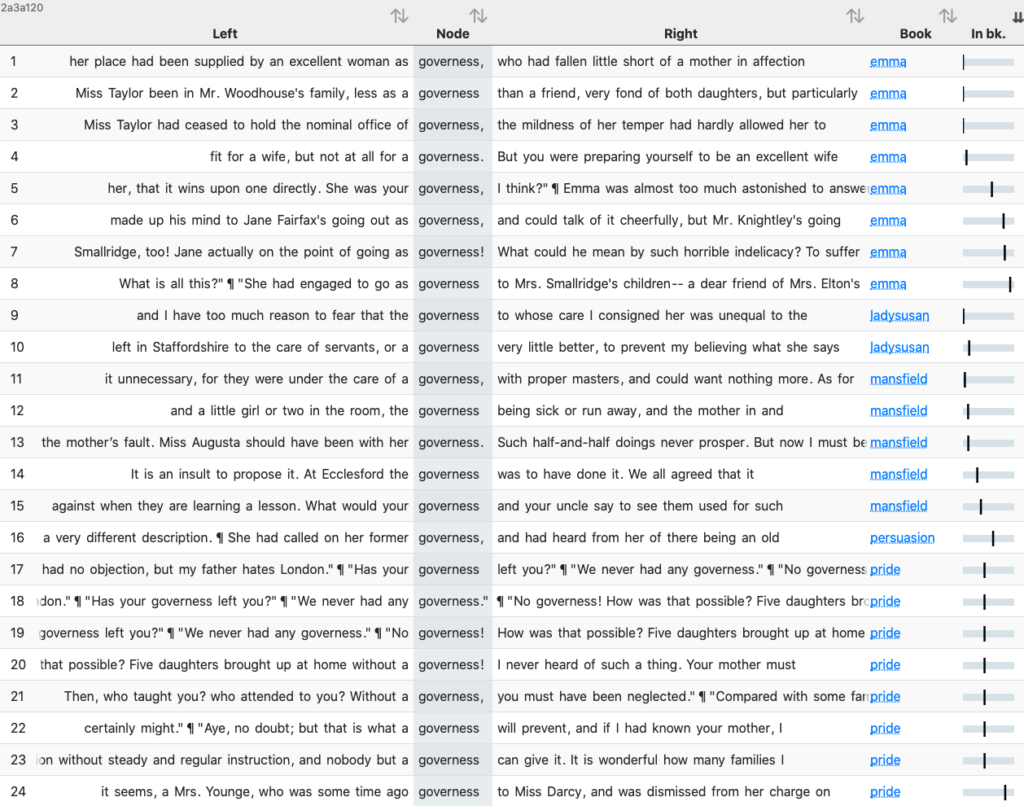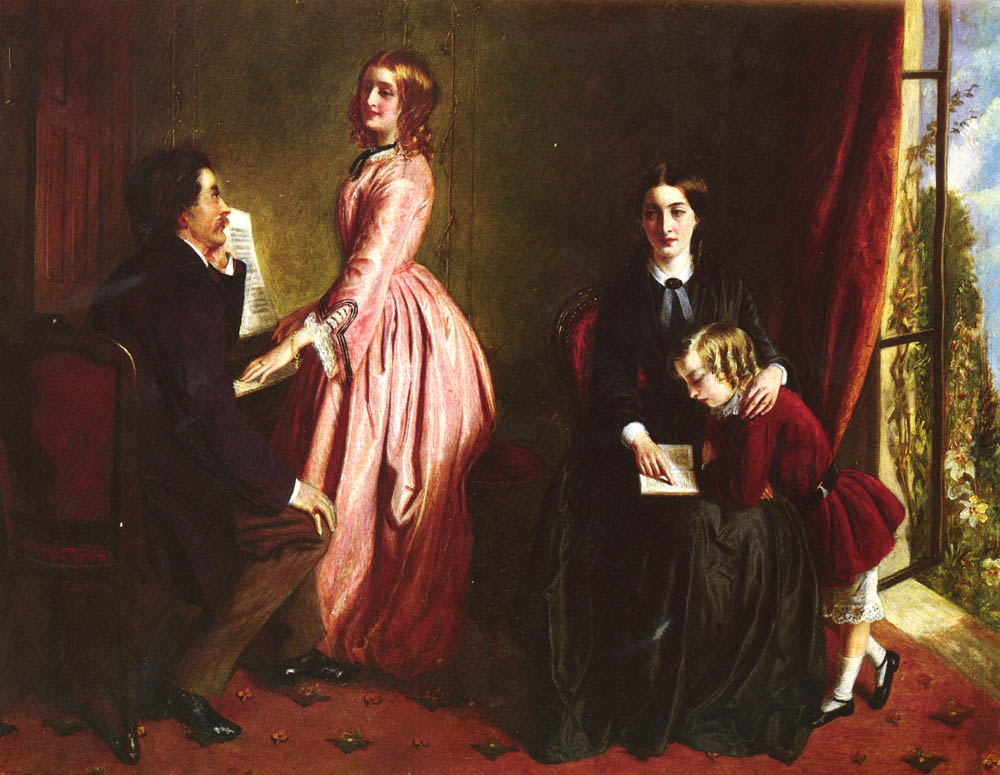In this post, Alex Round, a long-term member and newly appointed trustee of the Birmingham & Midland Institute (B&MI), explains how she has embraced technology for her A Level teaching during the lockdown. Alex has not only used Microsoft Teams for virtual class discussions but also to remotely introduce students to the CLiC web app for their own, independent and digital research projects. Her post is part of the BMI Lockdown Life series in collaboration with the B&MI. Join the conversation on Twitter with #BMILockdownLife.
I was first introduced to the B&MI as an undergraduate student, where I was given a tour of the building and introduced to the vast selection of treasures located within the library. It was on that day that I became a member, and have since used the B&MI as a primary location for my postgraduate research and resources for teaching.
Part of the National Curriculum for A Level Literature entails the exploration of the works of marginalised and oft-neglected figures in nineteenth century society – particularly women. As a feminist MRes student myself, teaching the content is incredibly insightful, not only for my Year 12 students, but for my own work. The plethora of resources the B&MI had to offer invigorated my teaching and planning, spending hours in the library’s basement scanning through pamphlets and historical articles. That was, until Lockdown happened.
Face to face communication is essential for the student/teacher relationship. With the B&MI temporarily closed, I needed to find alternative sources and ways to maintain student engagement. CLiC not only offers online copies of nineteenth century literature, but resources on nineteenth century concepts, such as education and socioeconomic injustice. Accessing 19th century resources is essential for A Level students, as one of OCR’s primary assessment objectives (A03) is to develop contextual awareness to help shape interpretations in their essays.
I didn’t provide the students with much, except the following research question:
How does the Victorian woman often challenge or interrogate feminine ideals?
The students have previously been looking at Florence Hartley’s (1860) The Ladies Book of Etiquette, and Manual of Politeness and Emily Thornwell’s (1856) The Lady’s Guide to Perfect Gentility: In Manners, Dress and Conversation and used their conventional ideas during class discussion on Microsoft teams. These are sources that I have used quite often in my own research on interrogating heteronormative ideals in Pre-Raphaelite poetry. I thought would provide them invaluable contextual knowledge that accompanies the learning content. I had previously instructed them to access Google scholar to access these sources. They have also been looking at the likes of Christina Rossetti and her poetry, and applied context to their interpretations of the poems. I now wanted to give them the liberty to try and research the role of a woman in society, or the roles that a woman can obtain.
I first introduced the CLiC web app as a research tool during one of our class discussions after I had been introduced to it myself by a fellow academic a week before. The students appeared interested with what the CLiC app had to offer – that’s where I began to think about how I could incorporate the app into their research project. During their next session via Microsoft teams, I showed them the framework of the app and how to navigate the website to begin their research projects. I sent them an instructions handbook via email to read whilst watching me show them how to access the app.
I then asked 14 of my year 12 students to work in pairs online to attempt to use the CLiC app to retrieve information that would enable them to answer the research question. I didn’t provide the students with any guidance as to how to record their findings, other than screenshotting their search results to see what came up and use their results to justify their research in their presentations. The students investigated the significance of the 19th century woman using search terms I had provided as a starting point that were associated with the women in the nineteenth century: fallen, maternal, domesticated. They retrieved results in the ‘concordance’ format illustrated for governess in Figure 1.

The outcomes for students were numerous. Some students found their findings on the role of the governess (see Figure 2) particularly interesting, finding that governess is used across a range of Austen’s novels. Students clicked on the concordance lines to then be taken to more context so they could read on the ideas surrounding the governess. They found that it has quite a paradoxical nature. One student came to the following conclusion for their research project using the critical theory they had learnt previously:
Millicent Bell outlines what she describes as the paradox of the nineteenth century governess: “she was a lady and yet a worker for wages” (Bell, 1993, p26). The student came to the following conclusion:
“The governess is supposed to be maternal and dignified in nature, and her role in education shows her respected upbringing. Yet, despite the role of the governess reflecting traits of the Victorian feminine ideal, her investments in other families implies that she is less likely to start a family of her own. This proves paradoxical, as she fails to meet the expectations of marriage and bearing children, despite being morally apt. The governess as a working-woman troubles gender boundaries as much as embracing them.”

The students found that, through using CLiC, they were able to look at the portrayals of women in the working world and how although these women meet the expectations of the Victorian feminine ideal, they also confuse, or at least trouble existing gender logic. Using the primary texts on CLiC as well as their existing knowledge provided them with enough material to complete a research project that I had set concerning gender in the nineteenth century.
What I also found useful were the pre-made resources on CLiC. There are worksheets concerning both Dickens and Women and Education. If you want to access the resources for your own class, you can view them using this link and on the CLiC resources page.
The impact of using CLiC during lockdown is measured by the outcomes it has had for the students. There has been enthusiasm for in-depth study of whole texts and pupils have recognised they have acquired transferrable skills, which can be applied to demonstrate their understanding of wider Victorian culture by using primary texts found on CLiC as their starting points, before entwining it with the critical theory they had learnt previously.
References
- Bell, M. (1993). Class, Sex and the Victorian Governess: James’s The Turn of the Screw. Cambridge: Cambridge University Press.
- Hartley, F. (1860). The Ladies’ Book of Etiquette, and Manual of Politeness. London: Hesperus Press.
- Thornwell, E. (1856). The Lady’s Guide to Perfect Gentility: In Manners, Dress and Conversation. New York: Derby & Jackson.
Suggested citation: Round, A. (2020, July). CLiC as a virtual teaching resource: Exploring the paradoxical role of women in the 19th century [Blog post]. University of Birmingham: CLiC Fiction Blog. Retrieved from https://blog.bham.ac.uk/clic-dickens/2020/07/10/clic-as-a-virtual-teaching-resource/
Enjoyed this post? The Birmingham & Midland Institute has set up a fundraising campaign to “offset the income which would usually keep the BMI running as the social and cultural hub that it should be, and encourage you to donate to what is an important lifeline for many older people in our society.” Check out their fundraiser here.

Join the discussion
1 people are already talking about this, why not let us know what you think?Comments